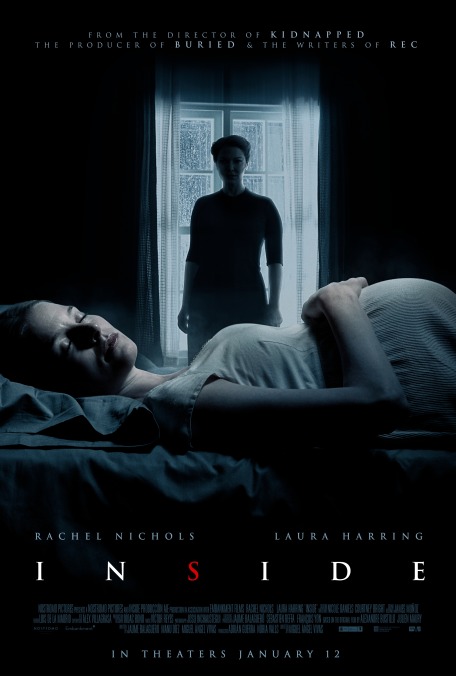In intensity, in grisliness, in courage of soul-crushing convictions, there aren’t too many horror movies that can hold a candle to the 2006 French home-invasion thriller Inside. Released at a time when Gallic genre films were basically competing to see who could send audiences racing to the exits faster, Alexandre Bustillo and Julien Maury’s relentless shocker twisted expected motherhood into a grotesque death match: maternal instinct locked in mortal combat with the deranged personification of a ticking biological clock. It’s the kind of brutally violent, visceral, tasteless movie you could almost never imagine getting made in America. But here, nonetheless, is an American remake, and while it’s been orchestrated with some skill and even intelligence, a question still pokes at the viewer, like rusty scissors jabbing at soft flesh: What’s the point of a less extreme version of a film whose whole raison d’être was extremity?
Because there are few nightmare scenarios that can’t be rendered even more nightmarish by the implication that they could really happen, the new Inside begins with an ominous if vague statistic. “In recent years in the U.S. alone there have been over 306 cases of infant abduction,” the opening text reads, and just as one might start poking holes in the word choices (does “more than 306” just mean 307? How many years are we talking about?), along comes a chilling punctuation: “10 percent of these cases happened when the mother was still pregnant.” Thanks to this single sentence, we know what’s at stake when we meet Sarah (Rachel Nichols), hugely expecting in her roomy suburban house, alone on Christmas Eve, weeks after the car crash that killed her husband. And when a strange woman shows up on Sarah’s doorstep, like a vampire awaiting invitation, we know that she wants (ahem) inside in more ways than one.
For a while, the feverish, life-and-death struggle that ensues doesn’t stray far, in harrowing incident, from Bustillo and Maury’s bloody blueprint. It’s a cruel, queasy game of cat and mouse, one designed to violate taboos (and comfort zones) about pregnant women and the vulnerable embryonic lives they carry. Sarah, who’s maybe hours from labor, contends not just with a hellbent intruder, hacking away at the bathroom door like Jack Torrance, but also contractions that are gradually intensifying. The mysterious assailant, meanwhile, has to subdue Sarah without harming the unborn child she’s come to claim, one way or another. In the original, this crazed human monster was played by Béatrice Dalle (Trouble Every Day), in a performance of scary, feral ferocity. Here, the role has passed to Laura Harring, the dark-haired femme fatale of David Lynch’s Mulholland Drive, and her energy is different—a kind of frighteningly hollow calm. (She puts a blade through a bystander’s face like she’s casually swatting a fly.)
Director Miguel Ángel Vivas (Kidnapped) finds other small ways to make this familiar carnage his own, using music sparingly (you hear every slice and dice) and often playing up the single-location, close-quarters suspense—knives sailing through narrow cracks to narrowly miss their mark—more than the Grand-Guignol gruesomeness. In the film’s most fruitfully creepy deviation, Harring’s psychopath kicks off the mayhem by methodically arranging an amateur operating theatre. Elsewhere, Vivas rips off the most nerve-wracking scene from Scream 2, of all inspirations. Much lighter on the explicit, almost medically realistic gore that characterized the other Inside, it’s a more restrained assault on delicate sensibilities. Whether restraint is really what anyone might want from a premise all but designed to traumatize is another matter entirely.
To that end, you do have to question the value of a remake that hits the same beats as the original, just with less force. Besides excising tacky, CGI shots of a fetus squirming in distress, Inside doesn’t improve upon Inside. In fact, it inherits some of its predecessor’s problems (like the obligatory way it keeps interrupting the one-on-one domestic warfare, sending neighbors and authorities blithely into the fold to ratchet up the body count) while also taming its terrors a little too much. And then, finally, comes the grand finale, and let’s just say that a horror remake hasn’t wimped out this hard since the 1993 American version of The Vanishing. The old Inside got under the skin, boy did it ever. This one just scratches the surface.

